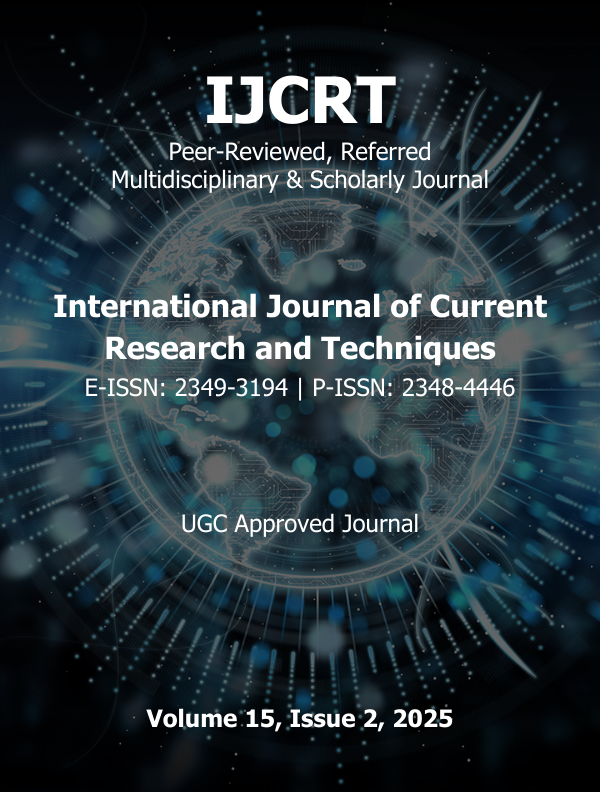Published 2025-05-15
Keywords
- Levodopa,
- wireless communication,
- cloud computing,
- fall detection,
- wearable sensors
- accelerometers,
- bradykinesia ...More
How to Cite
Copyright (c) 2025 IJCRT Research Journal | UGC Approved and UGC Care Journal | Scopus Indexed Journal Norms

This work is licensed under a Creative Commons Attribution 4.0 International License.
Abstract
Parkinson’s disease (PD) is a progressive neurological disorder that significantly impacts motor and nonmotor functions, reducing the quality of life of affected individuals. The advent of Internet of Things (IoT) technology offers promising solutions for real-time and remote monitoring of PD symptoms, enhancing disease management and patient care. Wearable sensors and environmental monitoring devices play a crucial role in tracking symptoms such as tremors, bradykinesia, and dyskinesia, while AI-powered platforms analyze data trends to predict symptom progression and enable proactive medical interventions. One of the most promising advancements in this field is the integration of fall detection mechanisms with wearable devices. PD patients are at a high risk of falls, which can lead to severe injuries. The objective of this research is to enhance the quality of life of PD patients through the implementation of IoT-based monitoring and intervention systems. By leveraging real-time data collection, IoT-based solutions offer a transformative approach to managing Parkinson’s disease by providing continuous, real-time monitoring and personalized care.

